
Copernical Team
Giant mantle plume reveals Mars is more active than previously thought
 On Earth, shifting tectonic plates reshuffle the planet's surface and make for a dynamic interior, so the absence of such processes on Mars led many to think of it as a dead planet, where not much happened in the past 3 billion years.
In the current issue of Nature Astronomy, scientists from the University of Arizona challenge current views of Martian geodynamic evolution with a report on
On Earth, shifting tectonic plates reshuffle the planet's surface and make for a dynamic interior, so the absence of such processes on Mars led many to think of it as a dead planet, where not much happened in the past 3 billion years.
In the current issue of Nature Astronomy, scientists from the University of Arizona challenge current views of Martian geodynamic evolution with a report on NASA's Orion spaceship slingshots around Moon, heads for home
 NASA's Orion spaceship made a close pass of the Moon and used a gravity assist to whip itself back towards Earth on Monday, marking the start of the return journey for the Artemis-1 mission.
At its nearest point, the uncrewed capsule flew less than 80 miles (130 kilometers) from the surface, testing maneuvers that will be used during later Artemis missions that return humans to the rocky cel
NASA's Orion spaceship made a close pass of the Moon and used a gravity assist to whip itself back towards Earth on Monday, marking the start of the return journey for the Artemis-1 mission.
At its nearest point, the uncrewed capsule flew less than 80 miles (130 kilometers) from the surface, testing maneuvers that will be used during later Artemis missions that return humans to the rocky cel Researchers say space atomic clocks could help uncover the nature of dark matter
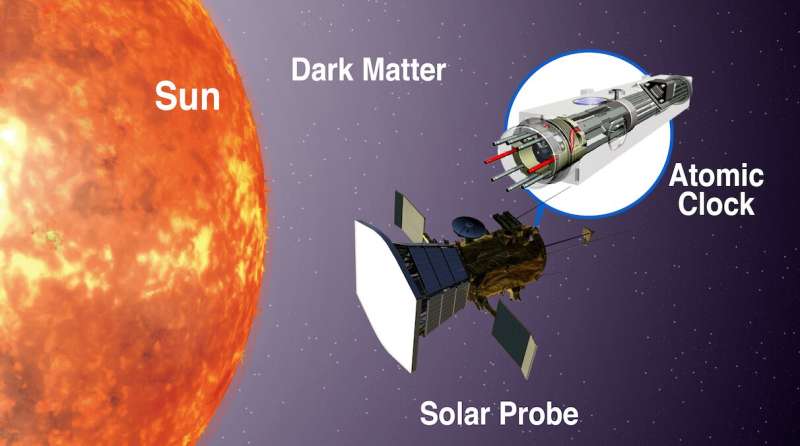
Studying an atomic clock on-board a spacecraft inside the orbit of Mercury and very near to the sun might be the trick to uncovering the nature of dark matter, suggests a new study published in Nature Astronomy.
Dark matter makes up more than 80% of mass in the universe, but it has so far evaded detection on Earth, despite decades of experimental efforts. A key component of these searches is an assumption about the local density of dark matter, which determines the number of dark matter particles passing through the detector at any given time, and therefore the experimental sensitivity.
In some models, this density can be much higher than is usually assumed, and dark matter can become more concentrated in some regions compared to others.
One important class of experimental searches are those using atoms or nuclei, because these have achieved incredible sensitivity to signals of dark matter.
NASA delivers first flight hardware to ESA for Lunar Pathfinder
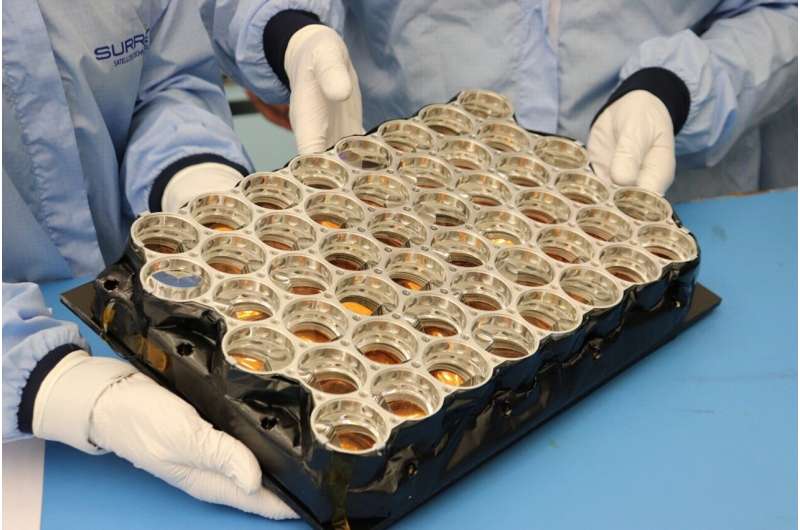
NASA delivered the first flight hardware for the Lunar Pathfinder mission to ESA (European Space Agency), which formally accepted the instrument on Nov. 4. NASA's Goddard Space Flight Center in Greenbelt, Maryland, developed the instrument, a laser retroreflector array, which will test new navigation techniques for lunar missions.
NASA and ESA plan to launch Lunar Pathfinder via a future Commercial Lunar Payload Services delivery. In addition to testing navigation capabilities, Lunar Pathfinder will operate as a commercial communications relay satellite and provide communications services for exploration missions on the lunar surface.
The Lunar Pathfinder mission is led by Surrey Satellite Technology Ltd (SSTL), and ESA arranged for the mission to provide communications services to NASA. Teams from NASA, ESA, and SSTL completed inspections when the laser retroreflector array arrived at SSTL's facility in Guildford, U.K., where it will be installed in the satellite.
NASA capsule flies over Apollo landing sites, heads home
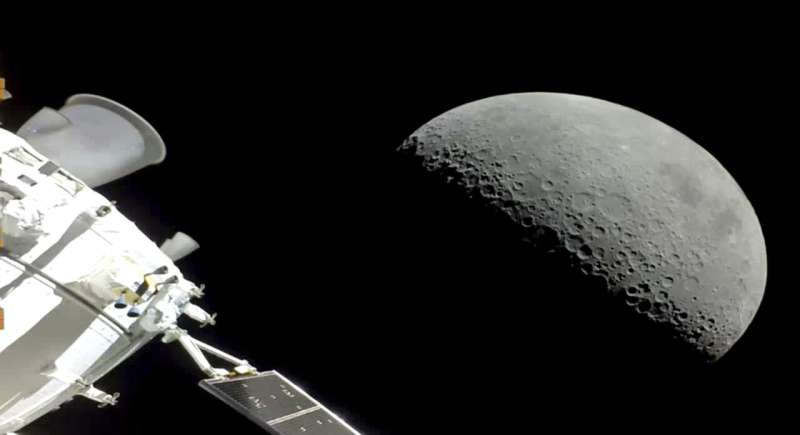
NASA's Orion capsule and its test dummies swooped one last time around the moon Monday, flying over a couple Apollo landing sites before heading home.
NASA is testing a new robotic arm that really knows how to chill out
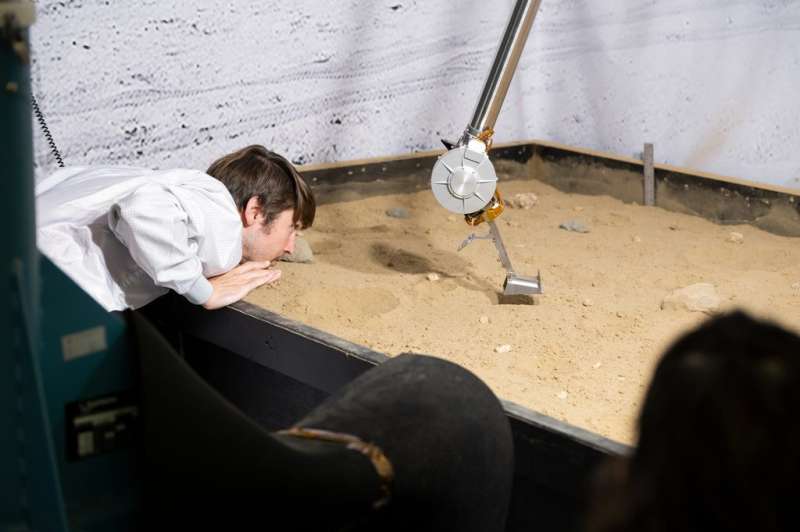
Future planetary missions could explore in extremely cold temperatures that stymie existing spacecraft, thanks to a project under development at JPL.
When NASA returns to the moon with Artemis, the agency and its partners will reach unexplored regions of the lunar surface around the South Pole, where it can get much colder at night than even on frigid Mars.
Artemis lunar flyby: Orion is coming home
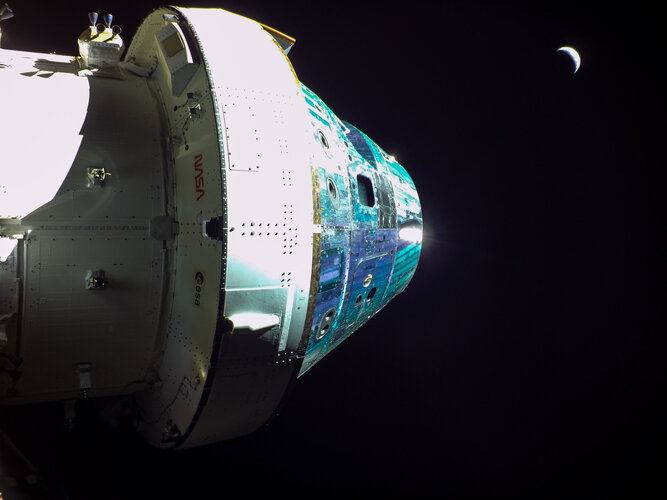
Today at 17:43 CET (16:43 GMT) the European Service Module for Orion fired its main engine at less than 127 km from the Moon's surface to put the Artemis spacecraft on a collision course with Earth.
Replay: MTG-I1 pre-launch briefing
 Video:
00:43:38
Video:
00:43:38
Watch the replay of the Meteosat Third Generation Imager-1 pre-launch press briefing held on 5 December 2022. Speakers include Simonetta Cheli, ESA’s Director of Earth Observation Programmes; Phil Evans, Director General of Eumetsat; Bertrand Denis, Vice President Observation and Science at Thales Alenia Space and Simon Keogh, Head of Space Applications and Nowcasting Research & Development at the UK Met Office.
MTG-I1 is scheduled to be launched on 13 December on an Ariane 5 rocket from Europe’s Spaceport in French Guiana. It is the first of six satellites that form the full MTG system, which will provide critical
Dabeeo partners with Maxar to expand the global satellite data analysis market
 Dabeeo, a geospatial information technology company based on AI (CEO: Ju-hum Park), has announced a partnership with Maxar Technology ("Maxar" hereinafter), a leading space technology and intelligence company. This partnership enables Dabeeo to expand its domestic and international earth observation service business.
The satellite data analysis market is expanding rapidly in line with the
Dabeeo, a geospatial information technology company based on AI (CEO: Ju-hum Park), has announced a partnership with Maxar Technology ("Maxar" hereinafter), a leading space technology and intelligence company. This partnership enables Dabeeo to expand its domestic and international earth observation service business.
The satellite data analysis market is expanding rapidly in line with the Sidus Space receives NOAA Tier 1 License
 Sidus Space, Inc. (NASDAQ:SIDU), a Space-as-a-Service company focused on mission critical hardware manufacturing combined with commercial satellite design, manufacture, launch, and data collection, has secured U.S. regulatory approval to provide global data services from its upcoming LizzieSat-1 mission through a Tier 1 license granted by the National Oceanographic and Atmospheric Administration
Sidus Space, Inc. (NASDAQ:SIDU), a Space-as-a-Service company focused on mission critical hardware manufacturing combined with commercial satellite design, manufacture, launch, and data collection, has secured U.S. regulatory approval to provide global data services from its upcoming LizzieSat-1 mission through a Tier 1 license granted by the National Oceanographic and Atmospheric Administration 
